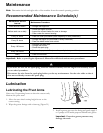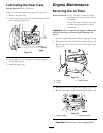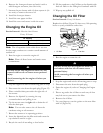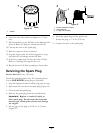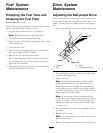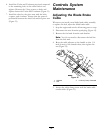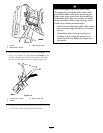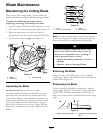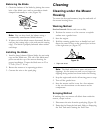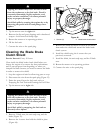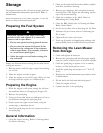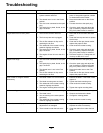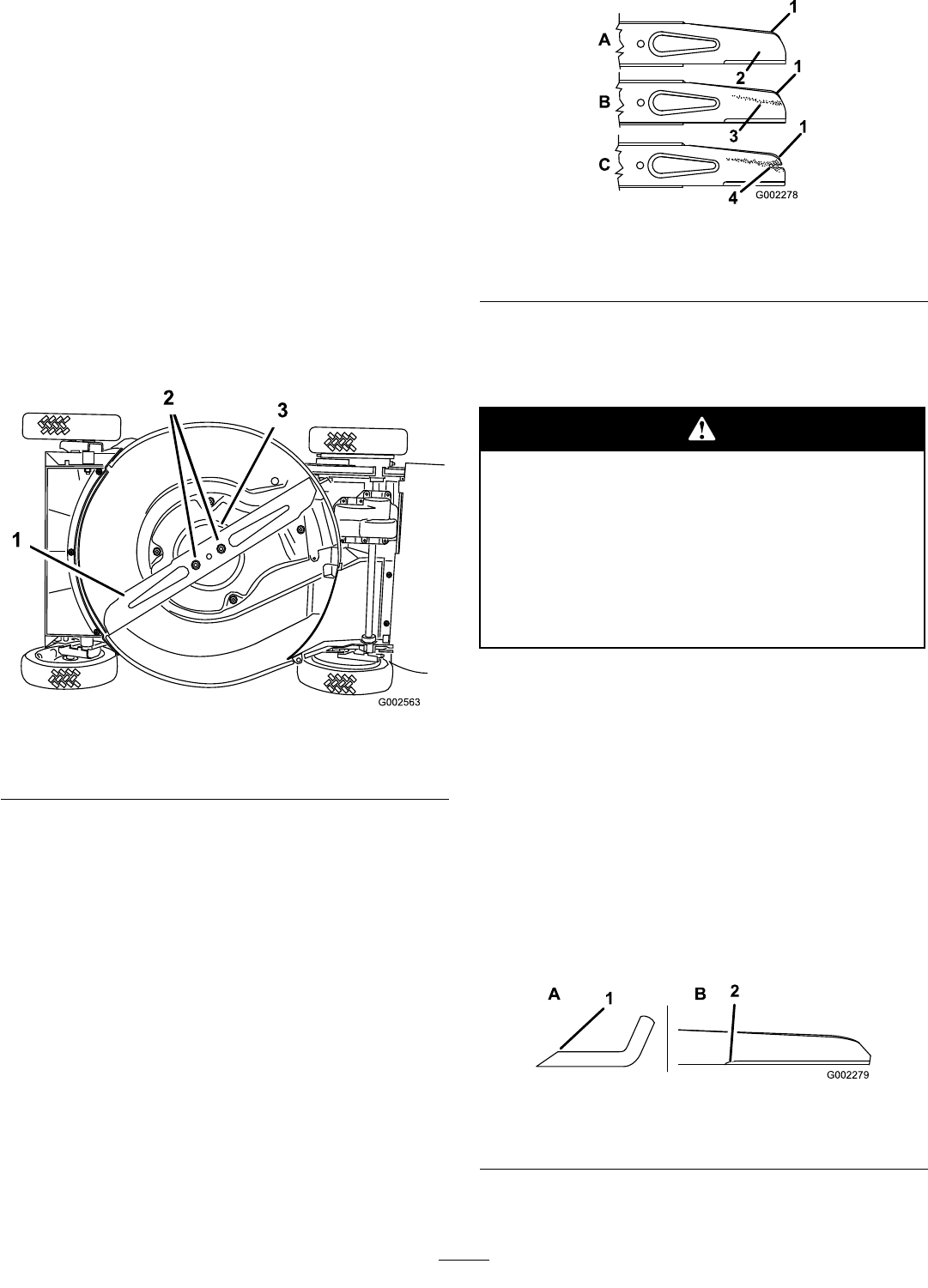
Blade Maintenance
Maintaining the Cutting Blade
Always mow with a sharp blade. A sharp blade cuts
cleanly and without tearing or shredding the grass blades.
Complete the following procedure before
inspecting, removing, or installing the blade:
1. Stop the engine and wait for all moving parts to stop.
2. Disconnect the wire from the spark plug (Figure 12).
3. Drain the petrol from the fuel tank; refer to
Emptying the Fuel Tank and Cleaning the Fuel Filter.
4. Tip the mower onto its right side (Figure 35).
Figure 35
1. Blade 3. Anti-scalp cup
2. Blade nuts
Inspecting the Blade
Service Interval: Before each use or daily
Carefully examine the blade for sharpness and wear,
especially where the at and the curved parts meet
(Figure 36A). Because sand and abrasive material can
wear away the metal that connects the at and curved
parts of the blade, check the blade before using the
mower. If you notice a slot or wear (Figure 36B and
Figure 36C), replace the blade; refer to Removing the
Blade.
Figure 36
1. Sail
3. Wear
2. Flat part of the blade 4. Slot formed
Note: For the best performance, install a new blade
before the cutting season begins. During the year, le
down any small nicks to maintain the cutting edge.
A worn or damaged blade can break, and a
piece of the blade could be thrown into the
operator’s or bystander’s area, resulting in
serious personal injury or death.
• Inspect the blade periodically for wear or
damage.
• Replace a worn or damaged blade.
Removing the Blade
Grasp the end of the blade using a rag or a thickly
padded glove. Remove the blade nuts, the anti-scalp cup,
and the blade (Figure 35).
Sharpening the Blade
File the top side of the blade to maintain its original
cutting angle (Figure 37A) and inner cutting edge radius
(Figure 37B). The blade will remain balanced if you
remove the same amount of material from both cutting
edges.
Figure 37
1. Sharpen at this angle only.
2. Maintain the original radius
here.
24



